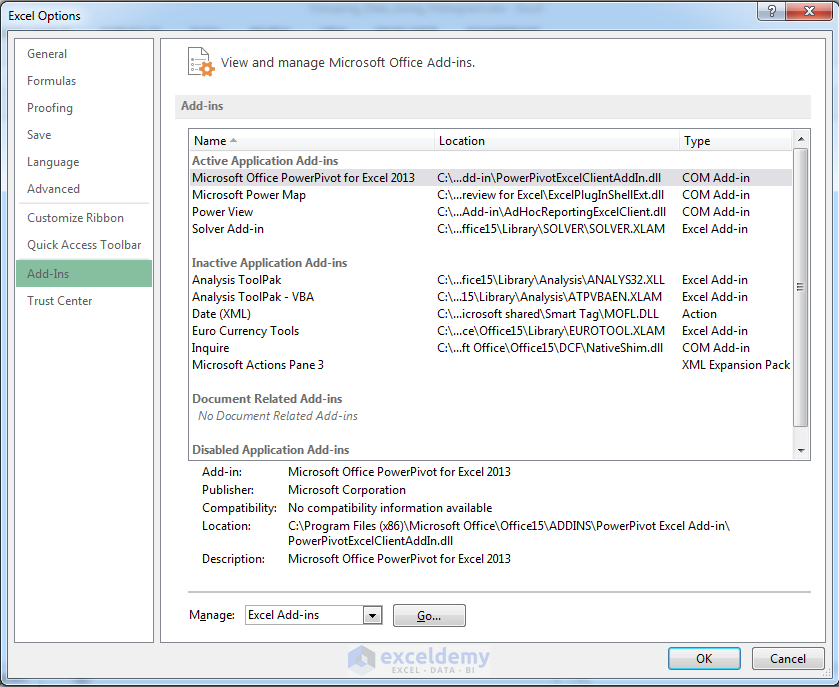

The standard deviation measures the same dispersion. In the example above, the sample variance for Data Set A is 2.5 and it increases to 12.5 for Data Set C. The larger it is the more spread out the data. The sample variance measures the dispersion of the scores from the mean. In these examples, the range for the Data Set A is 4. The range is distance between the top and the bottom score. However, the data sets are completely different. The same is true for Data Set C: “3, 3, 3, 3, 3”. We saw that both the mean and the median of Data Set A “1, 2, 3, 4, 5” is 3. The next group of measures explores how the scores differ from each other.
Analysis toolpak excel 2016 not showing up plus#
You can be: ■Ħ8% sure that the real average is between 2.3 and 3.7 (mean minus the standard error mean plus the standard error) ■ĩ5% sure that the real average is between 1.6 and 4.4 (two standard errors from the mean) ■ĩ9% sure that the real average is between 0.9 and 5.1 (three standard errors from the mean). Think of the example Data Set A, “1, 2, 3, 4, 5” as a sample of a population.


It measures how close the sample’s mean is from that of the entire population. The standard error is used for projects where you study a population sample. When there is an even number of values, the median is the average (mean) of the two middle points. When there is an odd number of values, the median is the value exactly in the middle. It is the midpoint value of the data set half the values are above it and half below. The median is another value in the middle. It represents a value in the middle of the population. It is the sum of all the data points divided by the number of data points. The mean is the measure we are most used to when we hear the word “average”. Each is useful for different types of data and distributions. They answer the question, how does the data group together? There are three averages: mean, median and mode. AveragesĪverages are measures of central tendency. The maximum is the highest value and the minimum is the lowest. The count is how many data points there are. The sum is the result of adding up all the numbers in the data set. The results show how many data points there are and where they start and stop. The first set of results describes the characteristics of the data set. Used with permission from Microsoft Corporation. Excel Descriptive Statistics output © Microsoft Corporation. I want to see the result in a chart also, so I select this Chart Output option. I want to see my output in a new worksheet.


 0 kommentar(er)
0 kommentar(er)
